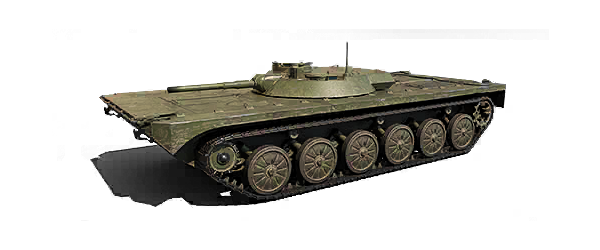VISpecialObject 911B
4

| Special MechanismAmphibious Tanks - allows tanks to travel on water. Adjustable Hydropneumatic Suspension - The suspension can be used to reduce the height of the hull, increasing conclealment but also decreasing maneuverability to a certain degree |
Amphibious Tanks/Adjustable Hydropneumatic Suspension |
| Firepower | 202 |
| Available shellsHEAT: High Explosive Anti-Tank shell. HE: High Explosive shell |
HEAT/HEAT/HE |
| Average lethality (HP)Average damage per shell. When penetrating armor, the actual damage will randomly float (±15%) around the average damage | 120/110/160 |
| Armor Penetration (mm)The armor thickness that a shell can penetrate when affected by normalization. The actual penetration will randomly float (±15%) around the average penetration. The actual penetration of AP/APCR shells decreases as the flight distance increases | 185/250/37 |
| Muzzle velocity (m/sec)Velocity of the shell at the moment it leaves the muzzle | 655/655/655 |
| Load time (sec)Time required to reload after the last shell in the clip is fired/Time required to reload the next shell of the same clip after a shell is fired | 16/1 |
| Clip capacity (rounds)Number of shells in each clip | 4 |
| Average damage per minute (HP)Uses standard shells. The amount of damage caused to enemy tanks within 1 min if all shells penetrate | 1516 |
| Dispersion (m)All shells fall within this radius from 100 m away | 0.4 |
| Aiming time (sec)Time it takes for the aiming circle to shrink by 67% | 2.8 |
| Gun rotation speed (deg/sec)Maximus rotation speed of the gun per sec in the firing area | 30 |
| Pitch angle (deg)Maximum angle the gun can reach relative to the horizontal position | -3/30 |
| Defense | 61 |
| Turret armor (mm)Armor thickness of the thickest part of the front/side/rear part of the turret | 40/40/10 |
| Hull armor (mm)Armor thickness of the thickest part of the front/side/rear part of the hull | 35/45/6 |
| Total HP (HP)Maximum HP of the tank. Replacing a more advanced turret can slightly increase HP | 1000 |
| Chance of fire upon receiving hitChance of catching fire when the engine is damaged | 15% |
| Maneuverability | 640 |
| Engine power (hp)Maximum power of the engine | 400 |
| Weight (t)Total weight of tank | 13.02 |
| Thrust-to-weight ratio (hp/t)The power of the engine divided by the total weight of the vehicle determines the acceleration performance of the tank | 30.73 |
| Maximum forward speed (km/h)The maximum forward speed the tank can maintain on a road | 72.5 |
| Maximum reverse speed (km/h)The maximum reverse speed the tank can maintain on a road | 20 |
| Turning speed (deg/sec)The maximum traverse speed of the tank | 42 |
| Off-road performanceThe maneuverability of the tank on mud, sand, snow, and grass. The higher the parameter, the better off-road performance | 96% |
| Wading performanceThe maneuverability of the tank in marshes and shallow water areas. The higher the parameter, the better wading performance | 67% |
| Aquatic forward speed (km/h)The maximum forward speed the tank can maintain in water | 28 |
| Aquatic reverse speed (km/h)The maximum reverse speed the tank can maintain in water | 16 |
| Time to switch to suspension mode (sec)Time required for the tank to switch to hydropneumatic suspension when the engine is intact | 2 |
| Time to cancel suspension mode (sec)Time required for the tank to cancel to hydropneumatic suspension when the engine is intact | 2.5 |
| Scouting | 369 |
| Max View Range (m)Vehicle's maximum spotting range. Increase to make it easier to spot enemies within 450 m | 380 |
| Signal distance (m)Radio communication distance. When the distance between two ally tanks is less than the sum of their commincation distance, they can see each other and report to each other about enemies they find | 550 |
| Stationary ConcealmentConcealment of a stationary vehicle. The higher the value, the harder it is to spot | 22.83% |
| Traverse ConcealmentConcealment of a moving vehicle. The higher the value, the harder it is to spot | 22.83% |
Updated:
If you like the project – consider supporting it:
Join us on social networks:
TankCompany.INFO is a player-created website for Tank Company. We are not an official NetEase or Tank Company website.
Game content and materials copyright © NetEase, Inc. All rights reserved
We use cookies so that we can offer you the best possible website experience. Read our privacy policy.